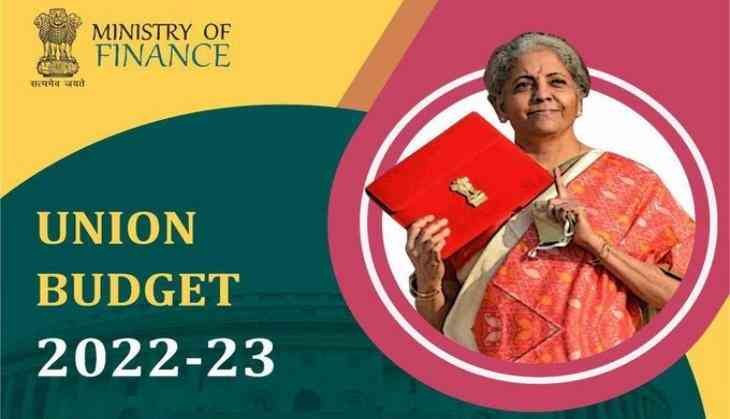Budget 2022 released on 1st February 2022 focused on ‘Amrit Kaal’ and aims to boost the growth of the economy amid the pandemic and rising inflation. The main objectives are Nation first, strong infrastructure, inclusive development, good governance, opportunities for youth, and education.
Let’s look into the key highlights of Budget 2022 – 2023.
MAIN HIGHLIGHTS
- Digital rupee currency to be issued by RBI using Blockchain, starting 2022-2023.
- E-passports with chips to be rolled out in 2022-23.
- National Tele Mental Health Programme for counselling will be launched – Network of 23 mental health centres of excellence with National Institute of Mental Health and Neurosciences (NIMHANS) being the nodal centre and IIT Bangalore providing tech support.
- Update errors in tax filing – time extended to 2 years from the relevant assessment year.
- No change in personal income tax slabs.
- Income tax of 30% on virtual digital assets. No deductions shall be allowed except for cost of acquisition. And tracking money trail on transactions of crypto assets by imposing 1% TDS at every transaction.
- Both Central and State government employees’ tax deduction limit to be increased from 10% to 14% to help the social security benefits of State Government employees and bring them at par with central govt employees and bring them at par with central govt employees.
FISCAL POSITION
- The fiscal deficit in RE 2020-21 is pegged at 9.5% of GDP and intends to reach a fiscal deficit level below 4.5% of GDP by 2025-2026 with a fairly steady decline over the period. The capital expenditure, estimated in RE is 4.39 lakh crores in 2020-2021.
- To ensure that the economy is given the required push, budget estimates for expenditure in 2021-2022, are 34.83 lakh crores.
- The Contingency Fund of India is being proposed to be augmented from 500 crores to 30,000 crores through the Finance Bill.
The budget was divided into 2 parts; firstly, AtmaNirbhar Bharat and lastly, the Tax System.
PART A
Part A rests on 6 pillars mainly Health and Wellbeing, Physical & Financial Capital, and Infrastructure, Inclusive Development for Aspirational India, Reinvigorating Human Capital, Innovation and R&D, Minimum Government, and Maximum Governance.
Health and Wellbeing (Refer to Annexure I)
- The Budget outlay is Rs. 2,23,846 crores in BE 2021-22 as against this year’s BE of Rs. 94,452 crores an increase of 137%.
- Investment on Health Infrastructure in this Budget has increased substantially, focusing on strengthening three areas of Preventive, Curative, and Wellbeing.
- PM AtmaNirbhar Swasth Bharat Yojana, will be launched with an outlay of about Rs. 64,180 crores over 6 years in addition to the National Health Mission.
- Merge the Supplementary Nutrition Programme and the Poshan Abhiyan, thereby launching the Mission Poshan 2.0 – To strengthen nutritional content, delivery, outreach, and outcome.
- The Urban Swachh Bharat Mission 2.0 will be implemented with a total financial allocation of Rs. 1,41,678 crores over a period of 5 years from 2021-2026.
- Vehicles would undergo fitness tests in automated fitness centres after 20 years in case of personal vehicles, and after 15 years in case of commercial vehicles.
Physical and Financial Capital and Infrastructure
- A scheme of Mega Investment Textiles Parks (MITRA) will be launched in addition to the PLI scheme. 7 Textile Parks will be established over 3 years.
- Major increase in funding for National Infrastructure Pipeline (NIP).
- Introduce a Bill to set up a Development Financial Institution (DFI) – sum of 20,000 crores to capitalise.
- Asset Monetisation –
Five operational roads with an estimated enterprise value of Rs. 5,000 crores are being transferred to the NHAI InvIT and transmission assets of a value of Rs. 7,000 crores will be transferred to the PGCIL InvIT.
- Other core infrastructure assets that will be rolled out under the Asset Monetization Programme are: NHAI Operational Toll Roads, Transmission Assets of PGCIL, Oil and Gas Pipelines of GAIL, IOCL and HPCL, AAI Airports in Tier II and III cities, Other Railway Infrastructure Assets and Sports Stadiums.
- Sharp increase in capital expenditure and thus have provided 5.54 lakh crores which is 34.5% more than the BE of 2020-21.
- Sum of more than Rs. 44,000 crores in the Budget head of the Department of Economic Affairs to be provided for projects/programmes/departments that show good progress on Capital Expenditure and are in need of further funds.
- By March 2022, another 8,500 kms and an additional 11,000 kms of national highway corridors. More economic corridors are also being planned with an enhanced outlay of Rs. 1,18,101 lakh crores for the Ministry of Road Transport and Highways, of which Rs. 1,08,230 crores is for capital. [Roads and Highways Infrastructure (Refer to Annexure II)]
- Indian Railways have prepared a National Rail Plan for India – 2030. The Plan is to create a ‘future ready’ Railway system by 2030.
- A new scheme will be launched at a cost of 18,000 crores to support augmentation of public bus transport services.
- Two new technologies i.e., ‘MetroLite’ and ‘MetroNeo’ will be deployed to provide metro rail systems at much lesser cost with the same experience, convenience and safety in Tier-2 cities and peripheral areas of Tier-1 cities.
- A framework will be put in place to give consumers alternatives to choose from among more than one Power Distribution Company. A revamped reforms-based result-linked power distribution sector scheme will be launched with an outlay of 3,05,984 crores over 5 years.
- Proposed to launch a Hydrogen Energy Mission in 2021-22 for generating hydrogen from green power sources.
- 7 projects worth more than 2,000 crores will be offered by the Major Ports on Public Private Partnership mode in FY 21-22.
- Financial Capital –
Propose to consolidate the provisions of SEBI Act, 1992, Depositories Act, 1996, Securities Contracts (Regulation) Act, 1956 and Government Securities Act, 2007 into a rationalized single Securities Markets Code.
- SEBI will be notified as the regulator and Warehousing Development and Regulatory Authority of regulation of gold exchanges in the country.
- Increasing FDI in Insurance Sector –
Amend the Insurance Act, 1938 to increase the permissible FDI limit to 74% in Insurance Companies and allow foreign ownership and control with safeguards.
- Stressed Asset Resolution by setting up a New Structure –
An Asset Reconstruction Company Limited and Asset Management Company would be set up to consolidate and take over the existing stressed debt and then manage and dispose of the assets to Alternate Investment Funds and other potential investors for eventual value realization
- Deposit Insurance – Amendments to the DICGC Act, 1961
- To improve credit discipline while continuing to protect the interest of small borrowers, for NBFCs with minimum asset size of 100 crores, the minimum loan size eligible for debt recovery under the SARFAESI Act, 2002 is proposed to be reduce to 20 lakhs.
- Company Matters –
- Decriminalization of the Limited Liability Partnership (LLP) Act, 2008.
- Propose to revise the definition under the Companies Act, 2013 for Small Companies. propose to incentivize the incorporation of One Person Companies (OPCs).
- NCLT framework will be strengthened, the e-Courts system shall be implemented and alternate methods of debt resolution and a special framework for MSMEs shall be introduced.
- Launching data analytics, artificial intelligence, machine learning driven MCA21 Version 3.0. This Version 3.0 will have additional modules for e-scrutiny, e-Adjudication, e-Consultation and Compliance Management.
- Disinvestment and Strategic Sale (Refer to Annexure III) –
IPO of LIC and prepare a next list of Central Public Sector companies that would be taken up for strategic disinvestment. I have estimated Rs. 1,75,000 crores as receipts from disinvestment in BE 2021-22.
Inclusive Development for Aspirational India
- Agriculture (Refer to Annexure IV) –
Provide adequate credit to farmers, enhanced the agricultural credit target to Rs. 16.5 lakh crores in FY22 and allocation to the Rural Infrastructure Development Fund of Rs. 40,000 crores. Procurement of wheat and paddy in Rabi & Kharif season to be Rs. 2.37 lakh crores of MSP value.
- Proposing substantial investments in the development of modern fishing harbours and fish landing centres. To promote seaweed cultivation, proposed a Multipurpose Seaweed Park to be established in Tamil Nadu.
- Migrant Workers and Labourers –
One Nation One Ration Card plan is under implementation by 32 states and UTs, reaching about 69 crores beneficiaries and online portal for unorganized labor and migrant workers
- Financial Inclusion –
Reduce the margin money requirement from 25% to 15% for – StandUp India, and to also include loans for activities allied to agriculture. Funds allocated for MSME stand at Rs. 15,700 crores.
Reinvigorating Human Capital
- Education (Refer to Annexure V) – One class, one TV channel – eVIDYA 200 TV Channels, providing supplementary education in regional languages for classes 1 to 12 across all states.
- Establishing 750 Eklavya model residential schools in our tribal areas.
- Skilling – National Apprenticeship Training Scheme at 3,000 crores will be provided for this.
Innovation and R&D
- National Research Foundation outlay will be of Rs. 50,000 crores for over 5 years.
- Earmarked Rs. 1,500 crores for a proposed scheme that will provide financial incentive to promote digital modes of payment.
- National Language Translation Mission (NTLM) – governance-and-policy related knowledge on the Internet being made available in major Indian languages.
Minimum Government, Maximum Governance
- National Nursing and Midwifery Commission Bill and National Commission for Allied Healthcare Professionals Bill to be introduced for transparency, efficiency and reforms in nursing and healthcare respectively.
- Allocated Rs. 3,768 crores in the year 2021-2022 for forthcoming digital census.
PART B
Dealing with Tax system (Annexure Pg 45), the following changes have been made,
Direct Tax Proposals
- Faceless Assessment and Faceless Appeal – Further steps to simplify the tax administration, ease compliance, and reduce litigation.
- Reduce compliance burden on senior citizens who are 75 years of age and above. For senior citizens who only have pension and interest income, proposed exemption from filing their income tax returns.
- Propose to reduce this time-limit for reopening of assessment to 3 years from the present 6 years. In serious tax evasion cases too, only where there is evidence of concealment of income of Rs 50 lakh or more in a year, can the assessment be reopened up to 10 years.
- Propose to constitute a Dispute Resolution Committee for them, which will be faceless to ensure efficiency, transparency and accountability – reduce litigation for small taxpayers. Anyone with a taxable income up to 50 lakh and disputed income up to 10 lakh shall be eligible to approach the Committee.
- Income Tax Appellate Tribunal – faceless; electronic and video conferencing.
- Corporate surcharge has been reduced from 12% to 7%.
- Relaxation to NRI – remove hardship of doubt taxation.
- Exemption from audit – To further incentivise digital transactions and reduce compliance burden, it is proposed to increase limit for tax audit for such persons from 5 crore to 10 crore.
- Relief for Dividend – In order to provide ease of compliance, make dividend payment to REIT/ InvIT exempt from TDS.
- Attracting foreign investment into infrastructure sector.
- To further ease filing of returns, details of capital gains from listed securities, dividend income, and interest from banks, post office, etc. will also be pre-filled.
Indirect Tax Proposals
Custom Duty (Annexure Pg 53) – Any new customs duty exemption henceforth will have validity up to the 31st March following two years from the date of its issue. There are changes in customs duties on several items.
CONCLUSION
The announcements made in the Union Budget by Finance Minister Nirmala Sitharaman have covered all the aspects crucial to making resources available and accessible, benefitting the people of the community. Every budget has its plus and minus, this shall reflect in the coming future.







